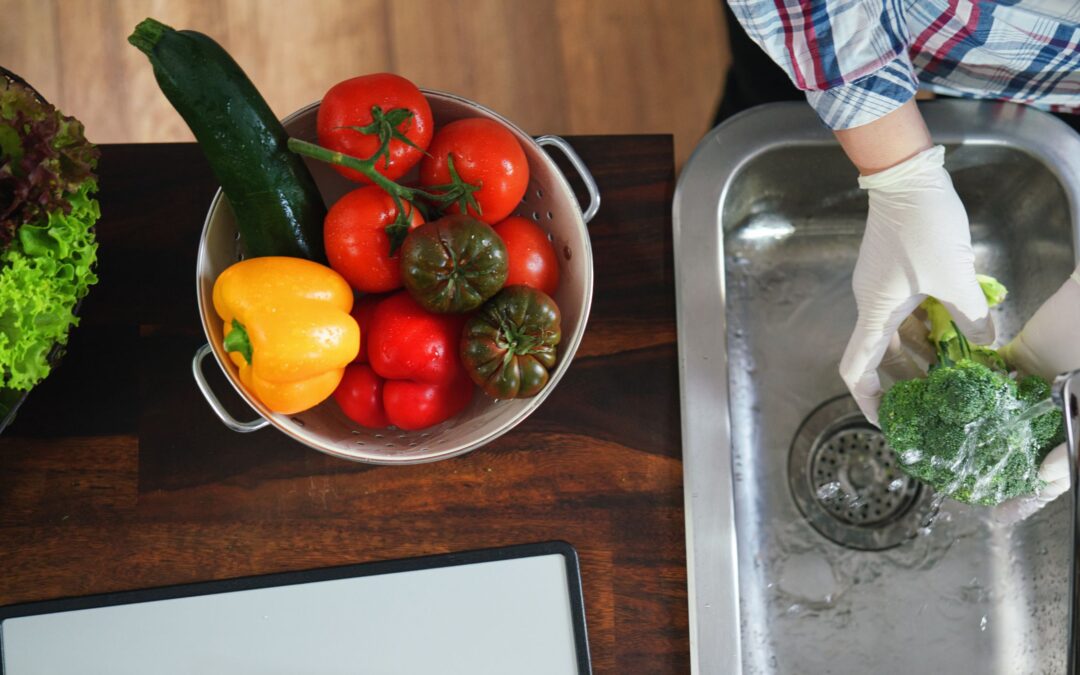Which Food Safety Practice Will Help Prevent Biological Hazards
Effective practices for ensuring food safety play a role in preventing the transmission of harmful microorganisms through food. It is crucial to implement measures and raise awareness across the food industry to reduce the occurrence of food borne illnesses and outbreaks. If you’re wondering Which Food Safety Practice Will Help Prevent Biological Hazards, then check out the rest of this article.
This comprehensive guide will explore food safety methods that can help minimize biological hazards focusing on important areas like ready to eat foods, temperature control and the duties of food handlers. By following these guidelines we can significantly improve public health outcomes. Lower the incidence of food borne diseases.
Understanding Biological hazards in Food
Defining Biological hazards
Biological hazards in food involve harmful microorganisms such as bacteria, viruses, parasites and fungi that can contaminate food at any stage of its production process posing serious health threats.
Common Sources of Biological hazards
Biological hazards can originate from various outlets including:
- Raw meat and poultry
- Unpasteurized dairy products
- Contaminated water
- Improperly sanitized surfaces used in food preparation
Essential Food Safety Practices to Combat Biological Risks
Proper Cooking Methods and Temperature Control
Ensuring thorough cooking at appropriate temperatures is a highly effective strategy for eliminating harmful microorganisms. The temperature danger zone, between 40°F and 140°F, is where bacteria can rapidly grow. Keeping food out of this zone is essential.
Cooking Temperatures:
- Poultry should be cooked to 165°F
- Ground meats need to reach 160°F
- Fish should be cooked to 145°F
Keeping Food Contact Surfaces Clean
Having sanitized surfaces where food touches is crucial to avoid cross contamination. Food service staff should regularly. Sanitize surfaces, utensils and equipment.
Effective Cleaning Steps:
- Wash with soap and water
- Rinse thoroughly
- Use a sanitizer
- Let surfaces air dry
Ensuring Safe Food Handling and Personal Hygiene
Food handlers play a role in preventing the spread of harmful bacteria by following proper handwashing procedures using gloves and maintaining personal hygiene.
Handwashing Technique
- Wet hands with clean water
- Apply soap and lather for least 20 seconds
- Rinse hands thoroughly and dry with a clean towel
The Role of Food Workers in Preventing Foodborne Illnesses
Training and Education
Regular training programs for food handlers on food safety practices are essential, for ensuring food handling practices.
Education in this area should cover the risks associated with hazards proper food handling techniques and the importance of maintaining personal hygiene. Servsafe certification is an excellent way to learn Which Food Safety Practice Will Help Prevent Biological Hazards.
Monitoring and Compliance
It is crucial for employers to oversee the adherence to food safety regulations through inspections and monitoring procedures. Food handlers play a role in following safety protocols to effectively prevent biological hazards.
Preventing Germ Transmission in Food Handling
Separating Raw and Ready to Eat Foods
It is essential to store foods separately from ready to eat foods to prevent the spread of germs. This basic precaution ensures that harmful bacteria from foods do not contaminate safe to consume foods.
Recommended Practices for Food Storage
Adopting storage practices can significantly reduce the risk of contamination. Always store food at temperatures and use clean clearly labeled containers.
Public Health Implications of Avoiding Foodborne Illnesses
Mitigating Food Poisoning Outbreaks
Adhering, to food safety practices helps mitigate outbreaks of food poisoning safeguarding consumer health and upholding trust in the food sector.
Economic Benefits
Preventing illnesses can lead to substantial economic benefits by decreasing healthcare costs and reducing productivity loss caused by illness.
Frequently Asked Questions
What are the risks associated with microorganisms in food?
Biological hazards in food pertain to microorganisms such as bacteria, viruses, parasites and fungi that can result in foodborne illnesses.
How can individuals working with food prevent hazards?
Food handlers can avoid risks by maintaining personal hygiene practicing proper food handling techniques and ensuring that surfaces coming into contact with food are kept clean and sanitized.
What does the term “temperature danger zone” mean?
The temperature danger zone ranges from 40°F, to 140°F, during which bacteria can multiply rapidly. It’s crucial to keep foods out of this temperature range to inhibit growth.
Why is it concerning when cross contamination occurs in terms of food safety?
Cross contamination can lead to the transfer of bacteria, from raw foods to ready to eat foods increasing the risk of foodborne illnesses.
What role does cooking play in ensuring food safety?
Adequate cooking helps eliminate microorganisms making the food safe to eat. Each type of meal requires temperatures to ensure safety.
How does preventing cases of illnesses contribute to public health?
By preventing instances of illnesses we can lower illness rates decrease healthcare costs and improve overall public health and well being.

